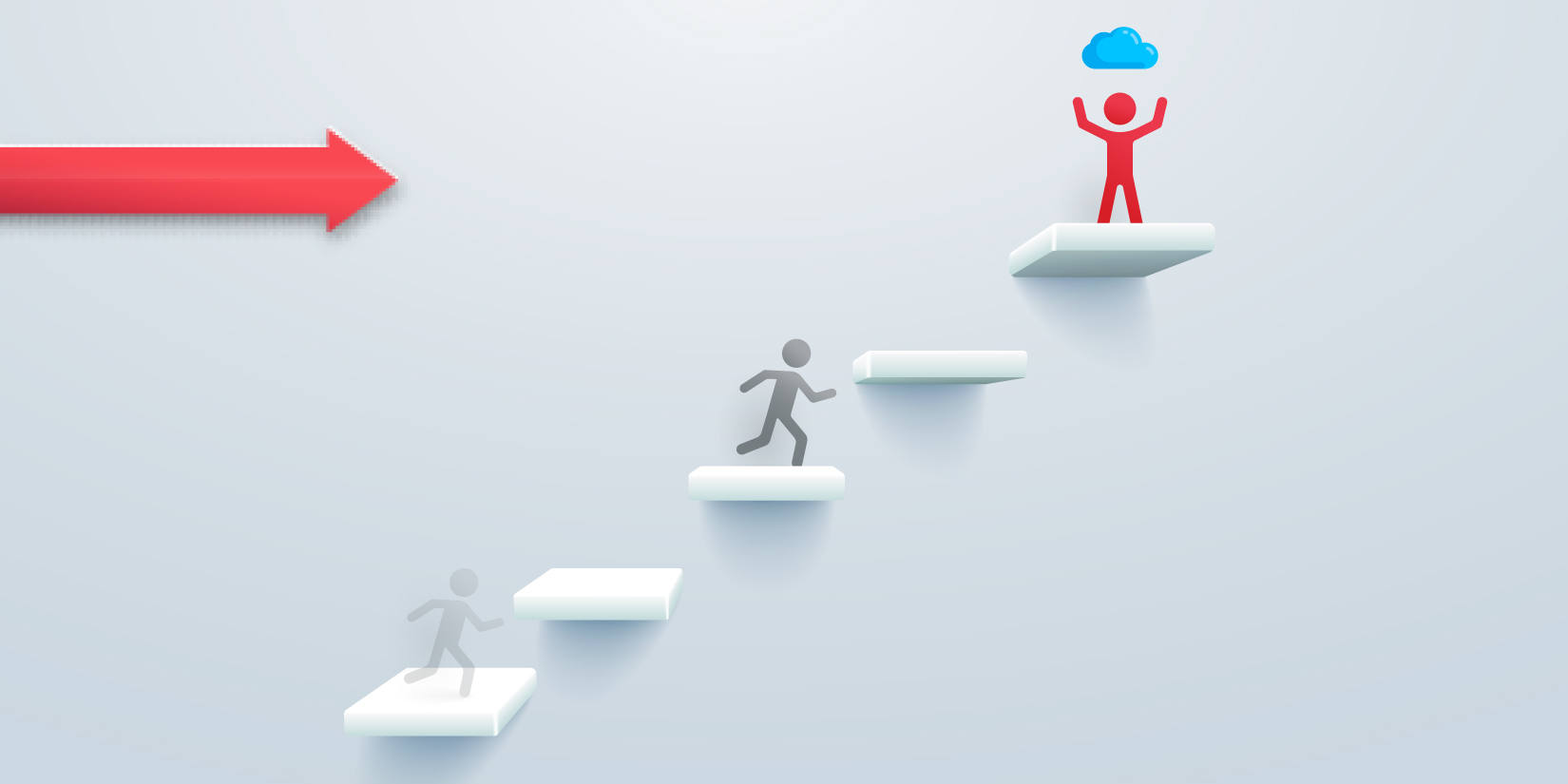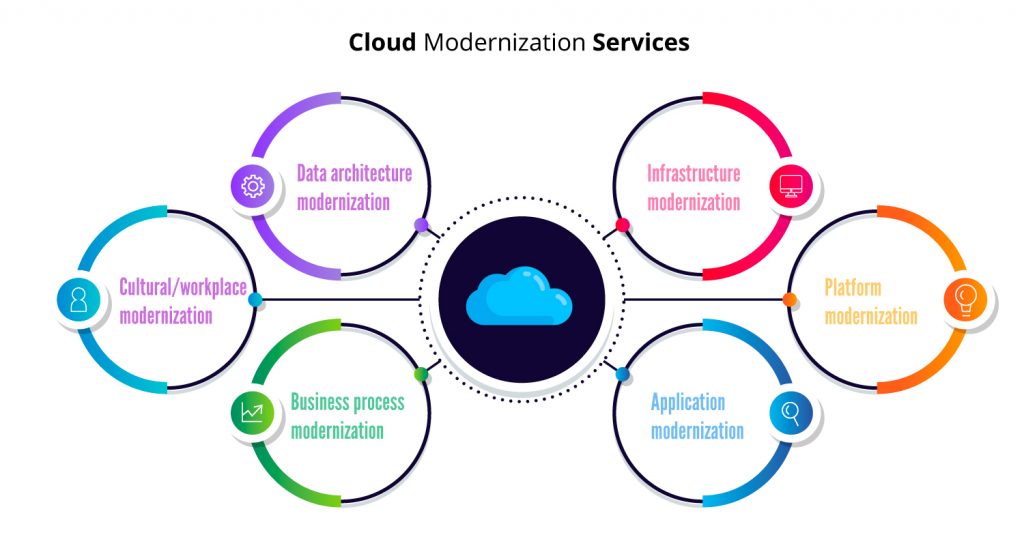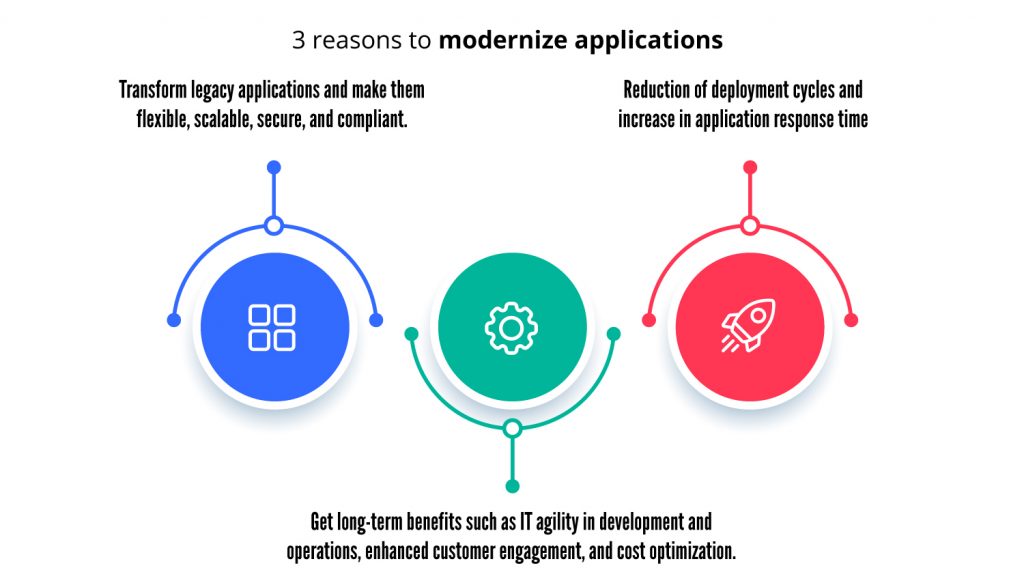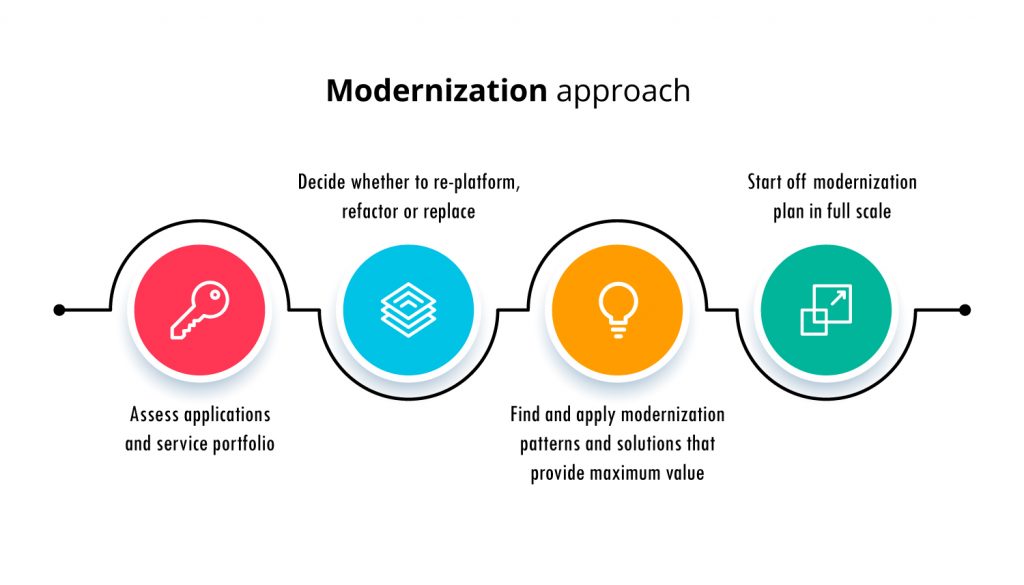
29 Sep 5 steps to prepare developers for cloud modernization
5 Steps To Prepare Developers For Cloud Modernization
Digital transformation empowers organizations and helps them take advantage of cutting-edge technologies and platforms to drive growth. But often, outdated IT infrastructure and applications can be roadblocks for organizations in embracing digital transformation on a full scale. So, migrating to the cloud involves modernizing applications and services to make them ready for the cloud.
Cloud modernization increases your business agility and flexibility. A cloud modernization strategy can help you embrace technological advancements and innovate faster. Cloud modernization services are not just about preparing and migrating applications to the cloud, but a coordinated effort to modernize infrastructure, platforms, data, processes, and culture.

Application modernization without any change in business processes, platforms or underlying infrastructure will not let you reap the full benefits of the cloud. A holistic modernization approach can help in enabling full digital transformation. Successful cloud migration requires strategy, planning, skills, and resources. This requires familiarization with the cloud environment, necessary skill acquisition, and change in processes. Preparing your team for cloud modernization is an important step. How do you do it? Let’s find out.
5 steps for developers to prepare for application modernization
As a developer, migrating and modernizing involves a lot of activities. Migrating and modernizing can be overwhelming, but a strategic cloud modernization plan can simplify this. The following 5-step approach can be used to prepare developers for cloud modernization.
1. Learn how application migration works
There are various preliminary steps to prepare for cloud modernization from creating the business case to assessing applications and infrastructure. Once the assessment is done, you will know what the dependencies are and then decide whether the application should be modernized. Public cloud services like Azure, GCP, and AWS offer various guides on cloud migration from video tutorials to step-by-step guides. This will help developers gain a thorough understanding of how migration works and gain confidence to perform the assessment and migration.
2. Learn to migrate the application to the cloud from on-premises
Once you learn how cloud migration works, you can try it for yourself. Try migrating applications in a sandbox environment. Learn to migrate using online tutorials and step-by-step guides to try migrating applications. This will help them gain in-depth knowledge about the environment and resources available. Getting hands-on experience is the best way to learn and public cloud services provide demo versions and free tiers to help with it.
3. Build a cloud-native app on your own
How do you build an app in the cloud environment? Build a cloud-native app in the language of your choice like Java, Python, Node.js, or .NET in your chosen cloud platform. This is the best way to prepare a developer for a cloud-first strategy. Creating and deploying applications in cloud environments will help developers understand the capabilities, possibilities, and limitations of the cloud environment.
4. Assess your apps for modernization readiness
The next step is to assess the applications for cloud readiness. There are many migrations service tools available to help you with assessing cloud readiness. You can assess the compatibility of applications and technologies with the cloud environment with tools. You can also automate the migration or rehost applications with migration assistants with minimal or no code changes. If it cannot be just rehosted, decide on the necessary changes and the modernization process.
5. Download the app migration tool kits and get necessary resources
There are many services and tools that can help you with modernizing applications and you can choose the ones you need based on the cloud platforms and modernization process you are following. Azure, AWS, and GCP offer their own app migration toolkits. Choose third-party tools carefully and get all the resources that you need to modernize and migrate applications from start to end.
Why cloud modernization?
Application modernization is a major decision and involves cost and business considerations. Cloud modernization can provide a lot of benefits and increase the value of applications in the current business context and in the future. Application modernization can provide improved scalability, performance, security, and reliability.
What are the benefits of application modernization?
The top advantages of application modernization are
- Boosts productivity of employees.
- Enriches overall customer experience.
- Reduces costs.
- Improves security.
Modernization can be done for providing better functionality and improved value but may not be always a necessity. On the other hand, modernization is necessary when applications are not compatible with cloud operations and cannot be just lifted and shifted.

How to plan for cloud modernization?
Cloud modernization offers a lot like transforming customer experience, powering innovation, increased flexibility, and agility, and reduced cost.
1. Assess and evaluate applications
To create a modernization strategy, you need to evaluate critical and core applications, and capture business benefits, risk factors, and dependencies. This also includes determining the functional, technical and financial significance of the applications.
2. Group applications and follow a phased approach
Group, rank, and sequence applications based on target and interim operating models, key technology and regulatory requirements, and extensive data migration requirements. This will help you create a detailed modernization plan and decide what goes first.
3. Decide the approach: Rehost, Refactor, or Re-platform?
The process of migrating applications to the cloud is explained with ‘Rs’ of cloud migration such as ‘Rehost, Re-platform, Refactor, Retire, Replace or Retain’. When applications cannot be simply rehosted, they need to be modernized. Modernizing applications involves deciding whether to refactor or re-platform.
- Re-platform – Re-platforming involves minimal code change and ensures that it delivers the same functionality
- Refactor– Refactoring or rearchitecting involves breaking the applications and reconstructing it in a cloud-native architecture
The degree of code change can vary from application to application and sometimes it might involve an entirely new programming language. Breaking down monoliths to microservices, migrating to the cloud, and exposing functionalities through APIs are some of the common approaches to application migration
4. Perform application modernization in phases
After developing a modernization roadmap that details MVP development phases and milestones, and risks, you are ready to migrate and modernize applications on the cloud. Move critical applications first and you can run them in parallel as you modernize and migrate to ensure service availability.

Do you have a cloud modernization strategy?
Application modernization requires strategizing, planning, skill building, time, and resources but it helps businesses gain a competitive edge. The benefits of application modernization are multifold, but the cost and business considerations should be made while deciding whether applications should be modernized or replaced. Phased modernization of applications is the best strategy, and you need a detailed plan and partner to help you with migration and modernization. Cloud migration consultants like Nuvento help businesses migrate, modernize, and manage their IT infrastructure to the cloud. Contact Nuvento to evaluate, modernize, and manage your application to utilize the full power of the cloud With the help of cloud consulting services.
